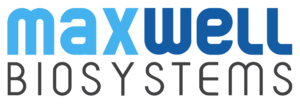

We are excited to announce the winners of our first Cell Story Challenge.
Lill Eva Johansen
BCRM, UMC Utrecht, Utrecht University, The Netherlands
Neural Circuit Development and Disease Lab – Dr. Jeroen Pasterkamp
Research Goal: Interrogating human iPSC-derived motor neurons about nerve conduction in an in vitro model of multifocal motor neuropathy
Background and motivation:Multifocal Motor Neuropathy (MMN) is a motor neuron-specific autoimmune neuropathy with the electrophysiological hallmark of conduction block, causing asymmetrical weakness in distal parts of limbs which can be partially reversed by treatment with pooled immunoglobulins (Ig) from healthy donors. We developed the first disease model for MMN by treating iPSC-derived motor neurons with serum from MMN patients, and demonstrated that IgM autoantibodies against the ganglioside GM1 were pathogenic in vitro (Harschnitz et al 2016). We reported a compound effect of MMN sera on calcium homeostasis: a persistent increase accompanied by structural damage in the presence of complement factors, as well as a complement-independent temporary spike which may relate to disruption of the physiological role of GM1 in ion channel regulation. However, we have yet to uncover how calcium dysregulation affects signal conduction in this model. Probing action potential propagation would provide a better understanding of the biological relevance of the model and could potentially offer a new method for testing drug candidates for efficacy in MMN.
Your High-Resolution Electrophysiology experiment proposal:To track action potential propagation in iPSC-derived motor neurons in healthy and disease conditions, to see if IgM-anti-GM1 can delay or block conduction in vitro – while taking advantage of the compatibility of the maxwell MEA with fluorescent imaging to distinguish the motor neurons from other neurons in the culture by post hoc staining, to see it the motor neuron specific nature of MMN is recapitulated in vitro. If an effect on action potential propagation is observed, to test if it can be rescued by Ig or other drug candidates.
Łukasz Bijoch
Nencki Institute of Experimental Biology, Poland
Laboratory of Neurobiology – Dr. Leszek Kaczmarek
Research Goal: My research goal is to understand one of the most complex cognitive abilities – learning. I want to understand how different memories are formed, stored and processed. A few decades ago, it was shown that cells which are active during learning undergo a process called synaptic plasticity. Such plastic changes appear on dendrites and with further experiments, it was made known that cells with such changes can be localized by tracking presence of particular protein – c-Fos. It is known that c-Fos is present precisely in cells creating engrams (coded memory) and can be localized in nuclei of such neurons.Thanks to that we can distinguish neural network storing memory but we are limited to the level of single cells. Due to lack of proper techniques we do not know how engram is actually encripted in changes on dendrites in neural circuits.
Background and motivation: Since my bachelor degree my interests are focused on synaptic plasticity, which is a general phenomena underlying memory formation. I am a PhD student at the Neurobiology Laboratory and now I have an opportunity to experimentally study this area. The goal of my PhD project is to define rules of memory formation in the amygdala and the hippocampus in the context of different types of learning. In my research I am mostly performing electrophysiology experiments, during which I am combining patch-clamp technique with an optogenetic approach.
Your High-Resolution Electrophysiology experiment proposal: I propose a project of mapping receptive fields of dendritic spines of hippocampal neurons creating engrams. Different viruses carrying information about channelorodopsin (activated by blue or red light) under promoter of c-Fos protein will be used. These viruses will be separately injected into the auditory and visionary cortex. Then the animal will undergo appetitive conditioning first to auditory and next to visionary stimuli. c-Fos protein will be expressed only in neurons, which will undergo synaptic plasticity (involved in learning) and consequently channelorodopsin will appear on these cells surface. After stabilization of conditioning animals will be sacrificed and acute hippocampal slices will be collected and placed in MaxOne MEA Chip. Blue and red laser will be used to stimulate projections from auditory or visionary cortex. Neural activity from different regions will be recorded in response to auditory or visionary signals. Synaptic inputs to dendritic spines of specific neurons involved in different types of learning will be correlated with localized dendritic events. Different modalities will create different patterns of responses, which will be recognized as different engrams. This will be the first description of a contextual engram in the brain.
—
The MxW Cell Story Challenge aims to support young scientists attend an international conference of their choice–to present their work and form collaborations with peers in the field. If your research involves the functional analysis of cell cultures (primary rodent or iPSC-derived neurons and cardiomyocytes), 3D tissues (brain slices, organdies, retina), or other biological preparation with electrogenic cells, then you are eligible for this challenge. At MaxWell Biosystems, we are curious to find out how our high-resolution electrophysiology platform can facilitate your research projects.
Stay tuned for the next call. For inquiries, contact us at: info@mxwbio.com.
 English
English


